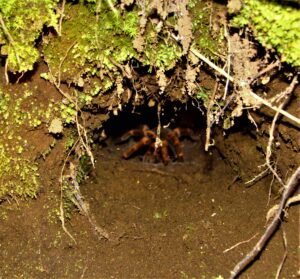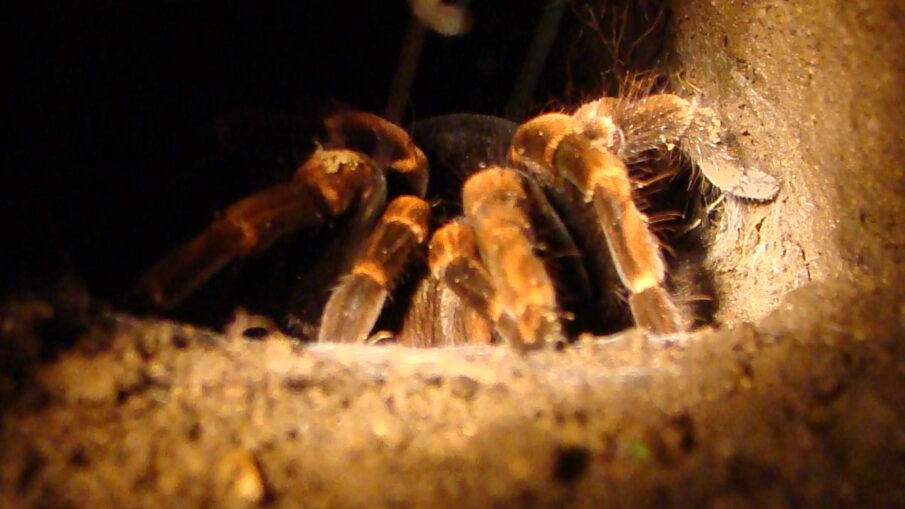You have a preconceived list of must-dos when visiting Costa Rica. Yet one of the best Pura Vida experiences isn’t even on your radar screen.
When I planned a trip to Costa Rica, I looked forward to seeing the lush mountain-top cloud forests. I looked at pictures of people zip-lining over the tree tops. It’s an activity that originated here — probably the quintessential tourist checklist experience. True to expectations, it was exhilarating.
What I didn’t expect was this surprising travel find: upon returning home, my favorite experience in Costa Rica was one I booked with feet on the ground and on the spur of the moment — a night tour of the jungle.
When the opportunity first emerged, I had my doubts. I thought it would be fairly dangerous to walk around at night in a place where interlopers with flashlights could startle and provoke poisonous animals. Would a tarantula wind up on my shoulder and attack my neck before I knew what was happening?
I would need an expert guide and some assurances!
Flashlights in hand, Jorge led our group through a small reserve near the town of Santa Elena. At the time of my visit, Jorge was studying to be a conservationist. He read about plants and animals the way I devour information about geography and travel. We asked him a wide array of questions that night, and he never was stumped for answers.
The flora and fauna of Costa Rica will astound you, and nighttime isn’t the best opportunity to look at these plants. It’s wise to book a day tour as well. But there is insect and animal life you simply will not see in daylight. You need a nocturnal platform to witness these wonders.
The forest we toured that night actually was only about 50 years old. The Santa Elena/Monteverde area had been colonized by Alabama Quakers in the early 1950s. They had cleared a lot of the land to make way for dairy farm pastures. Decades later, the Quakers joined with the Costa Rican government to set aside sections of land as the Santa Elena Cloud Forest Reserve. The jungles returned, and not as slowly as you might expect by northern standards. Annual rainfall in this tropical climate tops 140 inches in places. Dense growth occurs much more quickly than in more arid, frosty places.
The Santa Elena Cloud Forest Reserve supports one of the widest arrays of animal and bird species in this hemisphere. It provides habitat for species like the White Owl, which isn’t often visible from a day hike or zip-line. The White Owl is equipped with wings that make for quiet flight. That anatomical feature enables it to sneak up on prey without much threat of detection. Jorge told us his tours uncovered a White Owl maybe once or twice a month. We felt blessed.

As one often expects in a surprising travel find, some of the information we received was counter-intuitive.
For example, the particular species of tarantula we found in a rotting fallen log was not poisonous. The same for a scorpion we encountered, although Jorge warned a sting still would be painful. The most dangerous creature we encountered that night was a centipede! The toxic venom from this species of centipede has killed many unsuspecting children and some adults in Costa Rica. One of the first facts the kids learn in school is not to pick up centipedes.
We also observed a yellow lady bug that wards off enemies by emitting a distinct and pungent odor. Another defense mechanism that proved fascinating was a spider that, when faced with danger, becomes a green stick-like figure. Our flashlights must have posed enough of a threat to trigger that natural camouflage.
No reputable guide will absolutely guarantee that you’ll see a specific species on any given night, but it’s not unusual to see a variety of tree frogs, snakes, spiders, those deadly centipedes, dung beetles, white owls and other wildlife that won’t often show itself in daylight.
It is important to have someone with you who knows the jungle. You need a person who can speak with equal comfort of possible dangers and captivating wildlife. I was quite fortunate to get the last spot on Jorge’s tour for that night, because the next day I was moving on in my travels and would have missed the chance.
Find a Night Tour of the Cloud Forest
Expect to pay $20-$60/person for the tour. This is not a time to be a spendthrift. You’re paying for a safe, informed and unique tour. Always pack rain gear on one of these hikes, and be sure to wear sturdy, closed-toe shoes and long pants. During peak seasons, these tours tend to fill up quickly. Most are limited to no more than a dozen guests. Optimum tour group sizes are smaller, at maybe 3-5 people. Consider booking a night tour online before you leave home.
I don’t usually recommend guides, but here are a few to help kick off your own search:
Esteban Guided Daily Tours hosts a night tour from its base in Monteverde. The company offers free cancellation with at least 24-hours notice, and there’s a reserve now, pay later option as well.
Johnny Loves Nature Eco Tours includes pick-up from area hotels as part of its service. They do not charge booking fees.
Monteverde Wild offers a night walk that lasts about two hours on a private reserve. Tours are offered in English and Spanish.
ThreeBrothersTours includes binoculars for free use during their tours. Either join a group or book a private tour at additional cost.
Night tours often are arranged through innkeepers or come as part of an overall tour of the Monteverde area. Many hotels will tout specific tours. Be careful, as some hotels will recommend the person with whom they have a financial arrangement — a guide who may or may not be the best for your family or group. Look for someone with academic credentials and strong recommendations from previous visitors.
Above all, please enjoy the experience! It’s a surprising travel find you’ll talk about for years to come.

